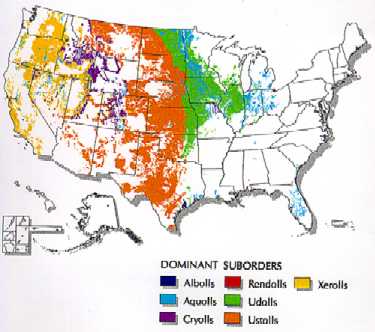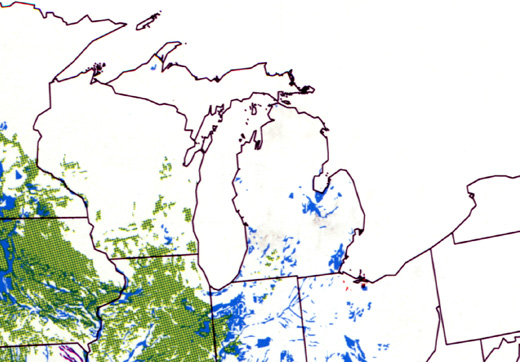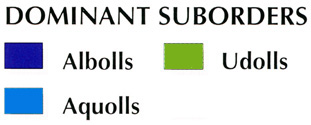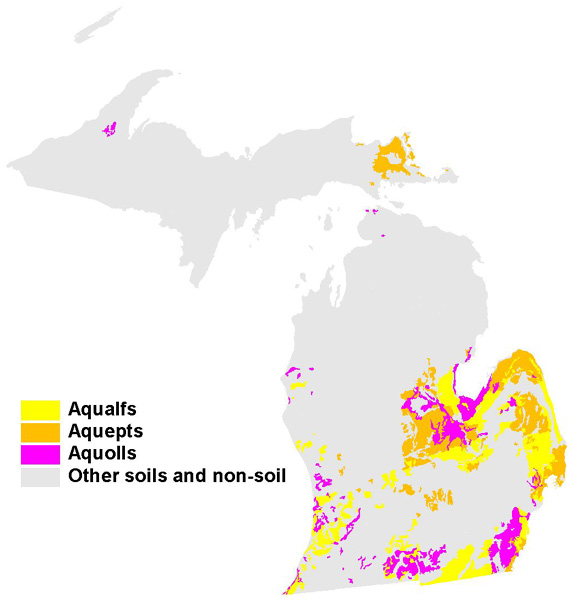MOLLISOLS
Mollisols are soils with dark, thick A horizons. They are most common on
landscapes that once were home to grasslands, such as the Prairies of the Great Plains,
USA, and the Steppes of Russia. However, we also find Mollisols on wet sites, where
organic matter production (by vegetation) is great, but decomposition of that organic
matter is slowed due to high water tables.
In the western Great Lakes region, many Mollisols are found, wherever grasslands once dominated the landscape. The maps below
show that large areas of Iowa and Illinois are covered with these very fertile soils.

Click here for full size image (375 kb)
Aquolls are the wet Mollisols. Albolls are Mollisols that may
have at one time been forested. Udolls are the typical, upland, dry
grassland-derived Mollisols.


In Michigan, most of our Mollisols are located on the wet glacial
lake plains. On these flat, wet landscapes,
the formation of dark, thick A horizons is enhanced by the high water tables. Hence,
Aquolls are common there. Today, many of these soils have been artificially drained,
and are quite productive for agriculture. Note on the
maps above and below (the map below shows where many of the state's wetter soils are
located) where the wet Mollisols (Aquolls) are found.

In some of the flat, dry, sandy landscapes of SW Lower Michigan, Udolls (upland Mollisols)
are found. Because these sites are dry and sandy, occasional fires swept across them
during the last 8,000 years. The fires kept forest vegetation at bay, and allowed
grasses to flourish, and Mollisols to form. Today, these landscapes, like the Mendon
Prairie in St. Joseph County, are used for irrigated corn and
soybean production.
In southwestern Michigan, a few small areas of Mollisols, or prairie
soils, exist. The original vegetation was prairie grasses with a scattering of bur oak
trees. The soils are dark brown or black in the A horizon, the result of a considerable
amount of organic material that accumulated as a result of the decay of prairie grasses.
The fibrous roots of the native grasses also added a considerable amount of organic
material to the A and the upper part of the B horizons, so that the soil is a deeper brown
or black than most other soils in Michigan except the true organic, or muck, soils.
Mollisols are normally very productive agriculturally.
Parts of the text on this page have been modified from L.M. Sommers' book entitled, "Michigan: A Geography".
This material has been compiled for educational use only, and may not be reproduced without permission. One copy may be printed for personal use. Please contact Randall Schaetzl (soils@msu.edu) for more information or permissions.